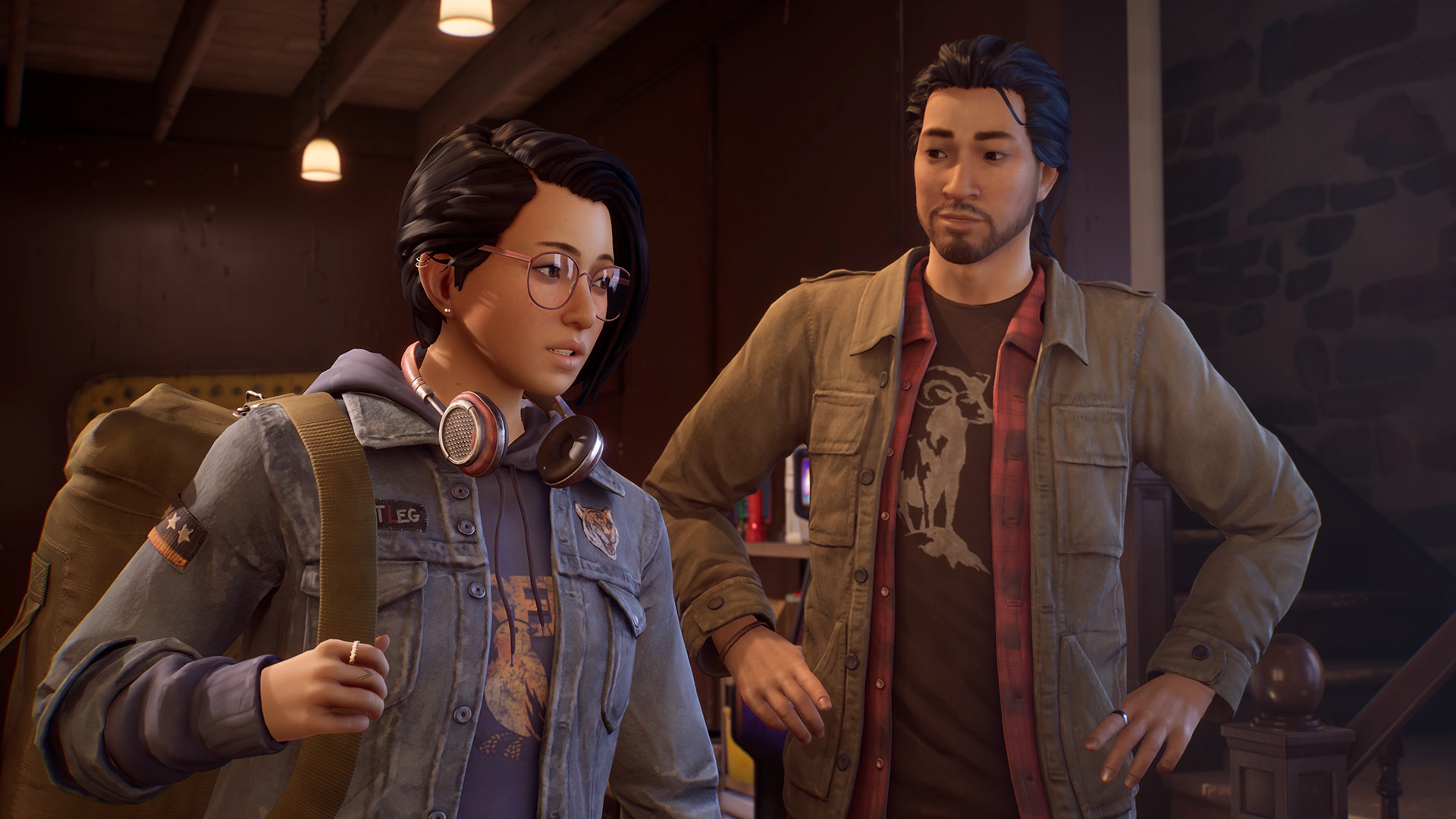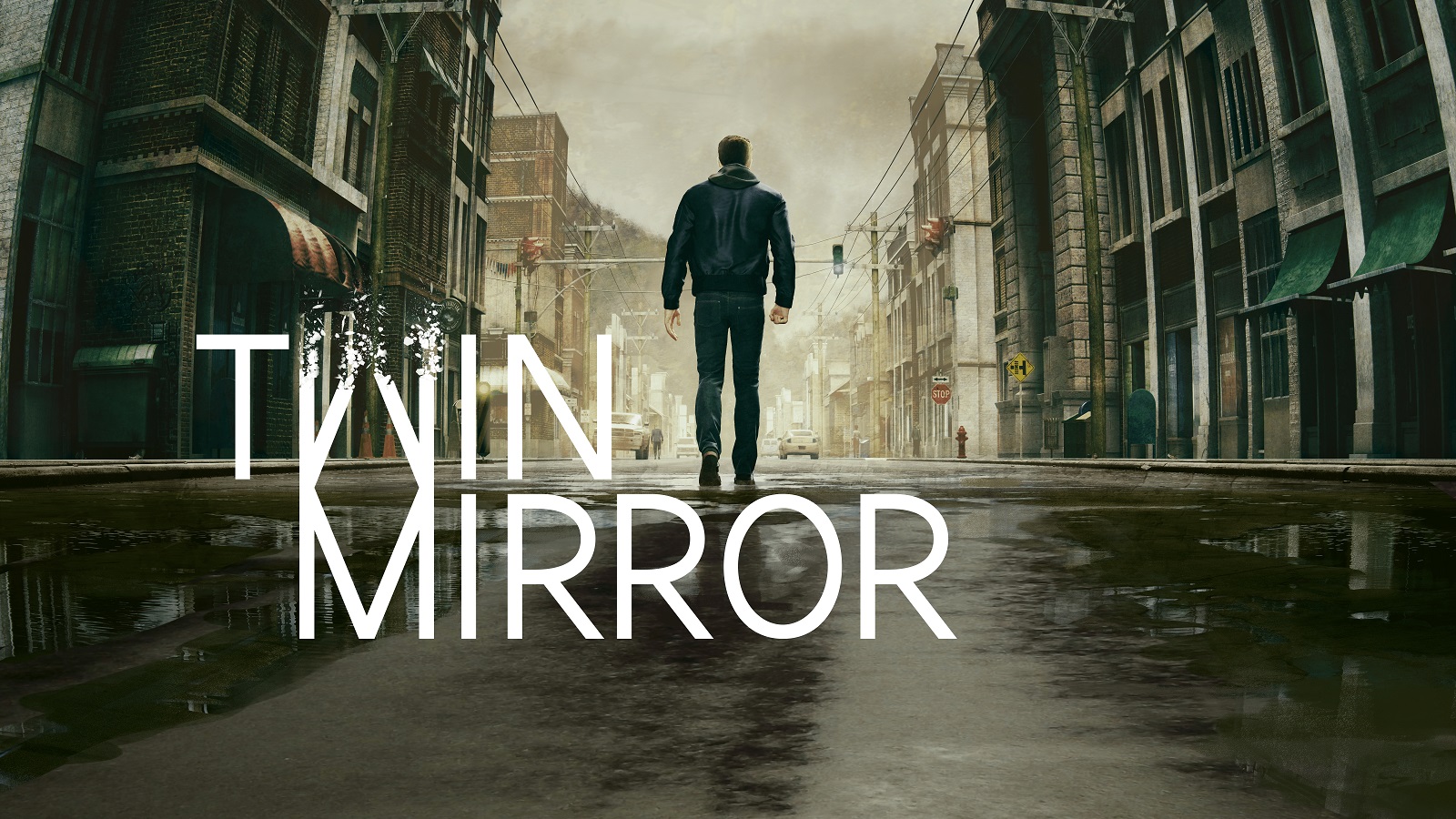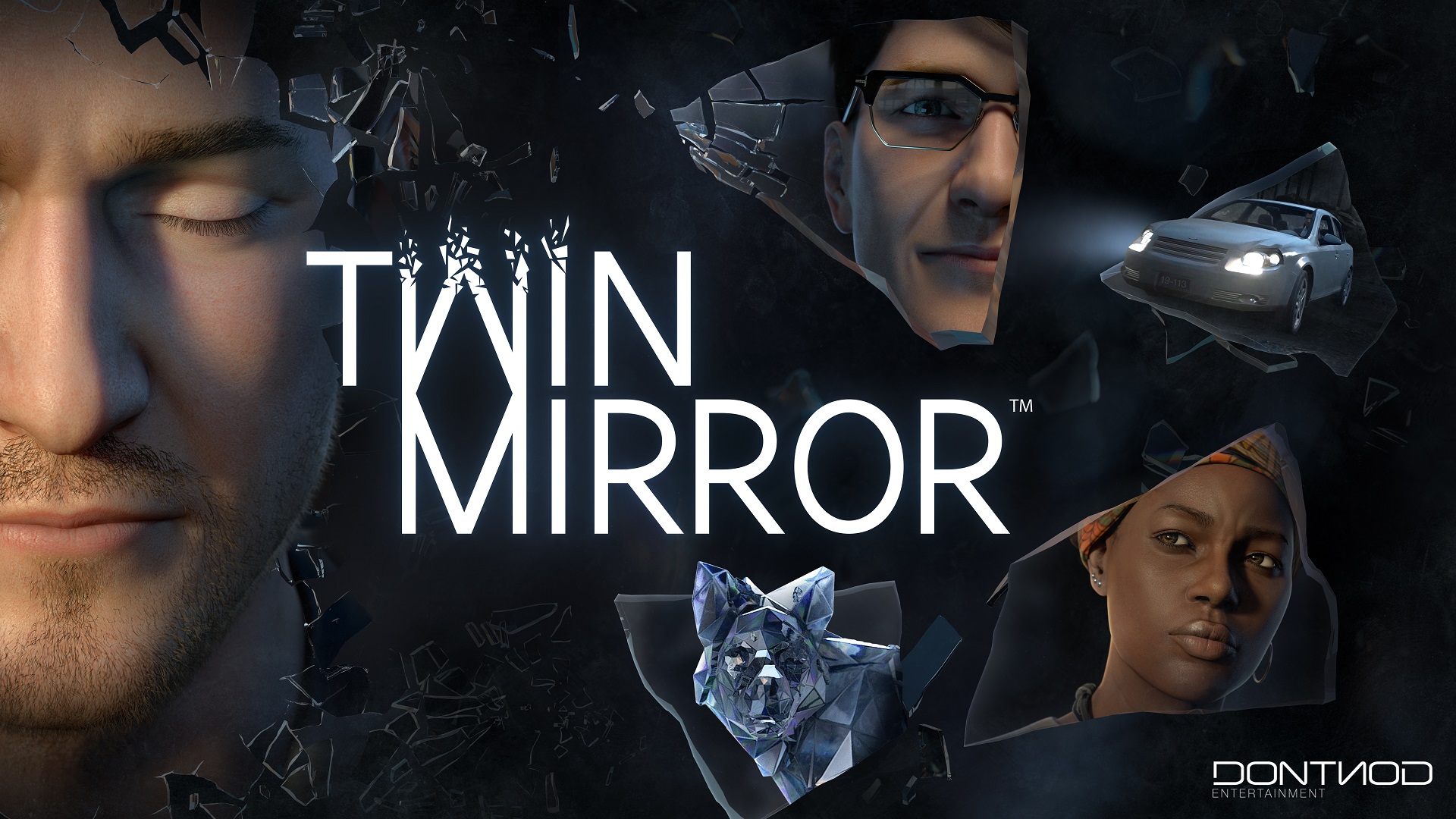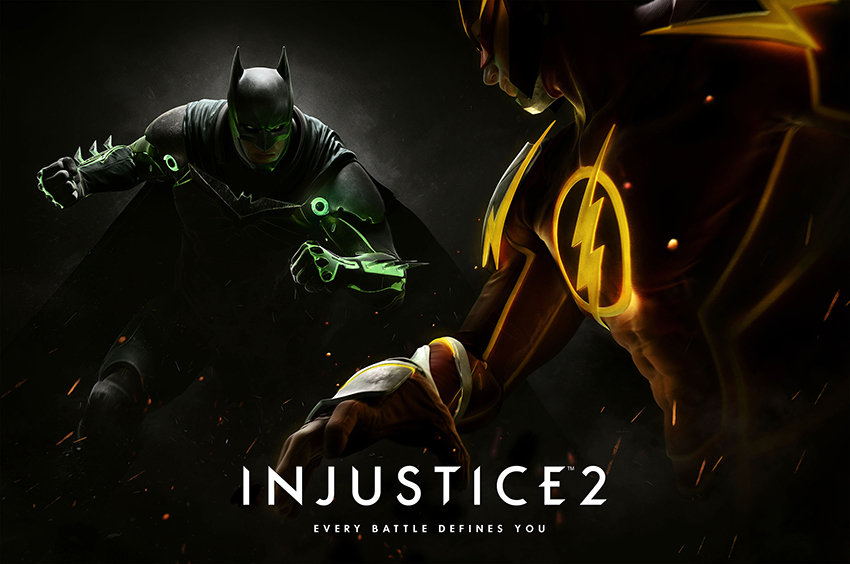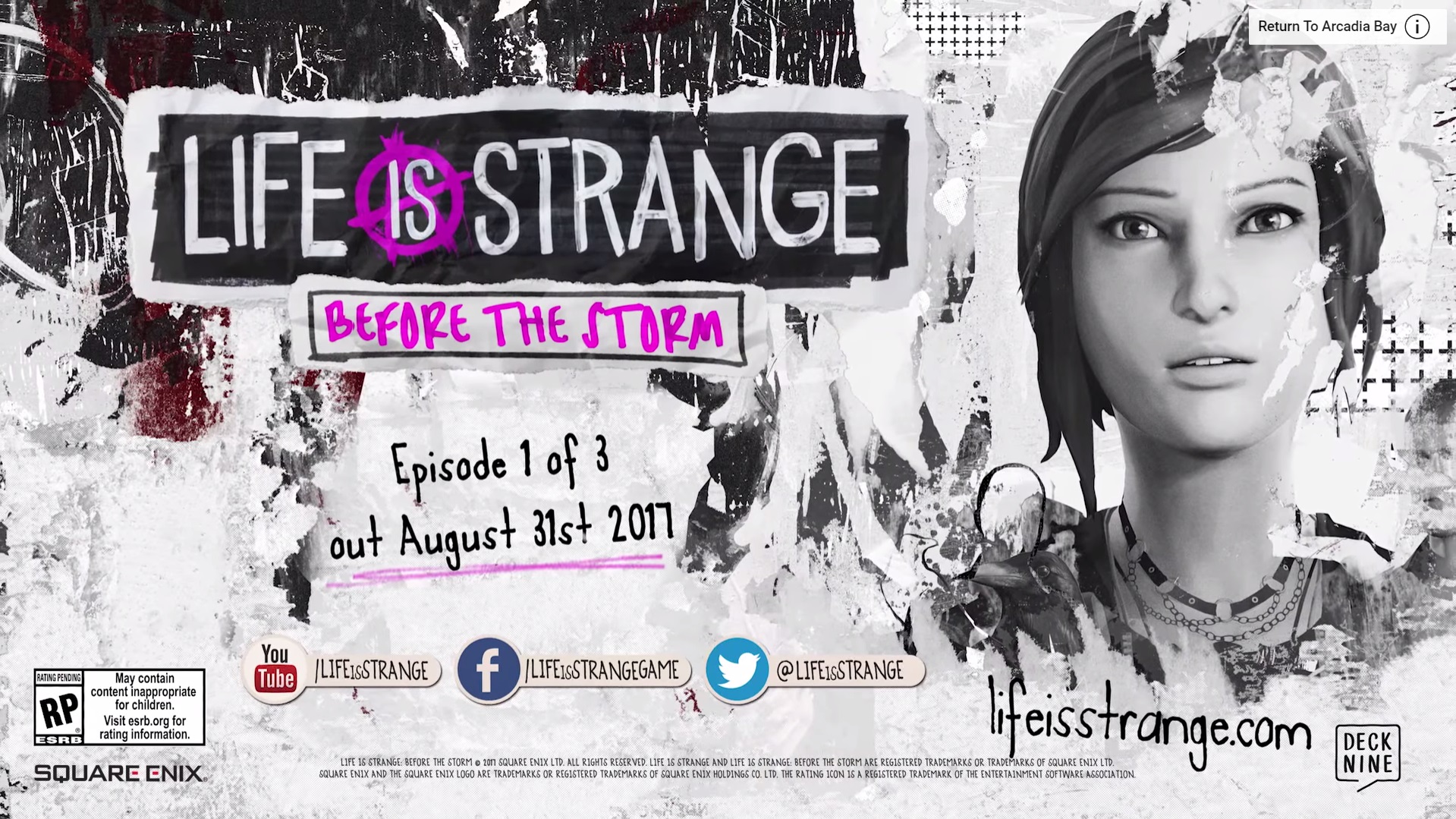
Tell Me Why, from Life is Strange developers Dontnod, tells the story of twins Tyler and Alyson as they reunite after a decade spent apart. In that time, Tyler has been in a juvenile reform facility, having been convicted of murdering his mother in self-defence, while Alyson was taken in by the Police Chief who worked on the case that convicted Tyler. During this time and through the support of the counselors at the facility he was placed in, Tyler has transitioned into his true self, leaving behind the false identity he was born into. His return to his hometown, a small town in Alaska named Delos Crossing, is filled with foreboding as he seeks to finally put his past life behind him and truly begin his life anew.
Upon arriving home with Alyson and beginning to clean up their childhood home so that it’s ready for sale, they make a discovery that throws their understanding of their past into disarray and leaves them with questions they never knew existed. I won’t go into details, because that would spoil some of the fantastic twists in the story, but suffice to say there’s plenty of mystery to be solved. Throughout the roughly ten hours the game took to complete, there was never a dull moment. Sure, there were quiet moments, but not once did the story feel like it was dragging on or growing boring. It was well paced, varied up the tone and momentum throughout and was just generally a fantastic story throughout.
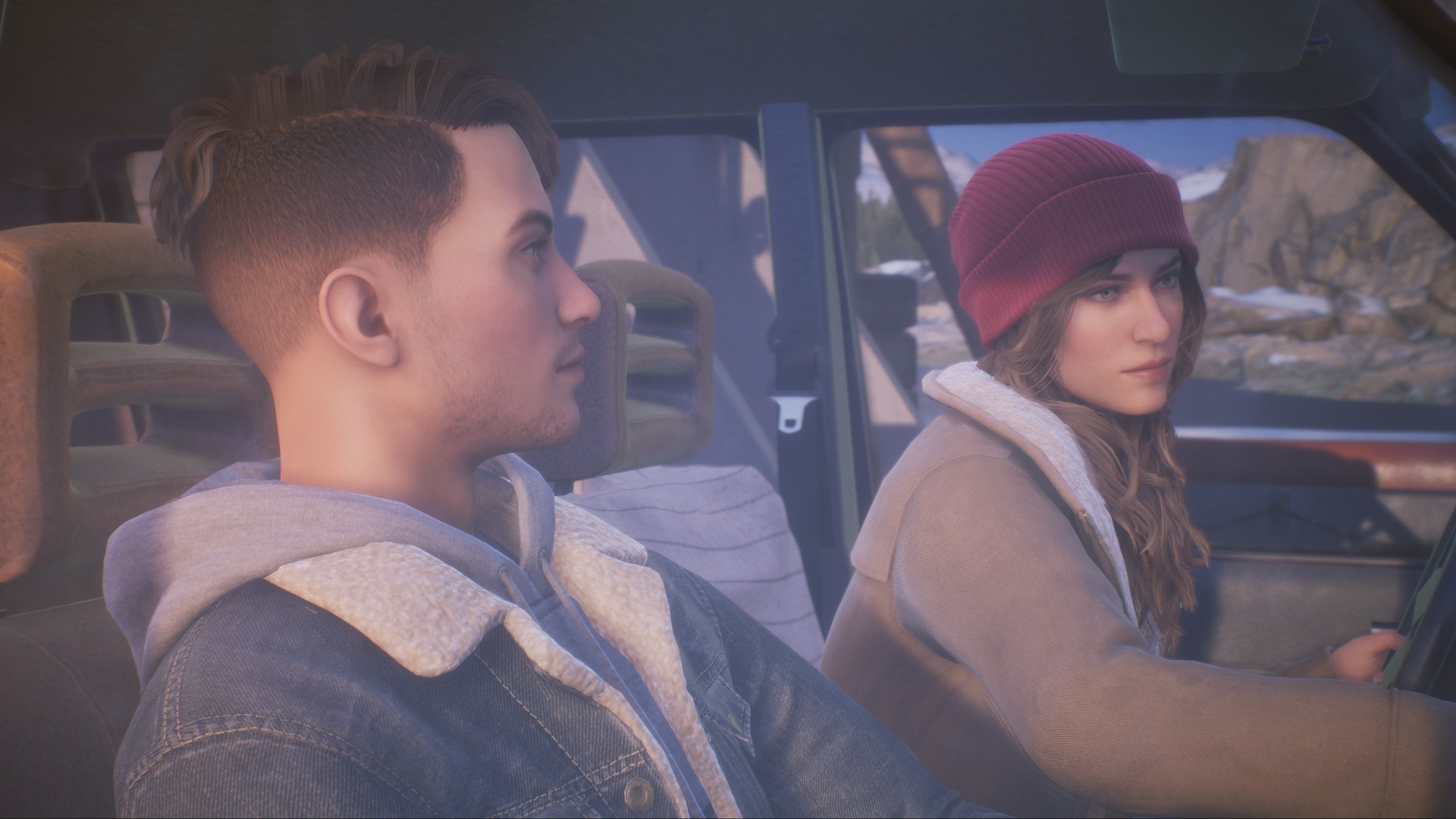
What is both a boon and a burden for that story, is the game’s characters. Led by Tyler and Alyson, Delos Crossing’s residents are a ragtag bunch that vary in not just narrative importance, but also in the quality of their execution. Many of the characters in the game are multi-faceted, with both strengths and flaws that are well executed and presented. Tyler is the perfect example of this, with his tenacious personality and desire to unravel the mystery off his past regularly causing him to push people too far and clash with the residents of Delos Crossing. Similarly, someone like Sam, the alcoholic friend of the Twins’ late mother, is given a personality beyond the caricature that troubled characters normally find themselves in. As you learn more about him, his past and his current situation, you see him in a new light and come to appreciate him all the more.
Conversely, there are other central figures to the story who simply don’t come across anywhere near as well. A perfect example of this is Eddy, the police chief that took Alyson in after the death of her mother. He’s a stern, yet caring figure, who is simply trying to do his best to support both of the twins. Yet, his character never really evolves beyond that. You begin to learn some things about his past traumas and hurt, and get more details on who he is, but it never really amounts to anything. Despite being a central figure, it feels like the story wouldn’t have been any worse for wear if he simply didn’t exist. The same can be said for the entirety of the Delos Crossing police force, who feel like they were simply placed into the game as set dressing and nothing more. There will always be less important characters in a story, but when a quarter of your roster feels like they may as well not exist, you’re not in a great space.
This is all supported by some great dialogue that feels completely natural and realistic. The dialogue really feels like it draws out the personalities of the characters talking, and it never moves into the unrealistic or melodramatic. Similarly, the environmental writing is fantastic, with plenty of great letters and flavour text that really expand the overall narrative. The game’s voice acting, however, often harms the overall story. Alyson and Mary-Ann’s voice actors are fantastic, while Tyler’s isn’t bad, but the delivery from many of the game’s other characters is often flat and bereft of emotion. Alyson’s obviously emotional lines bring real impact to her sequences, while other characters like Eddy leach engagement out of the story by rolling monotonously through their lines.
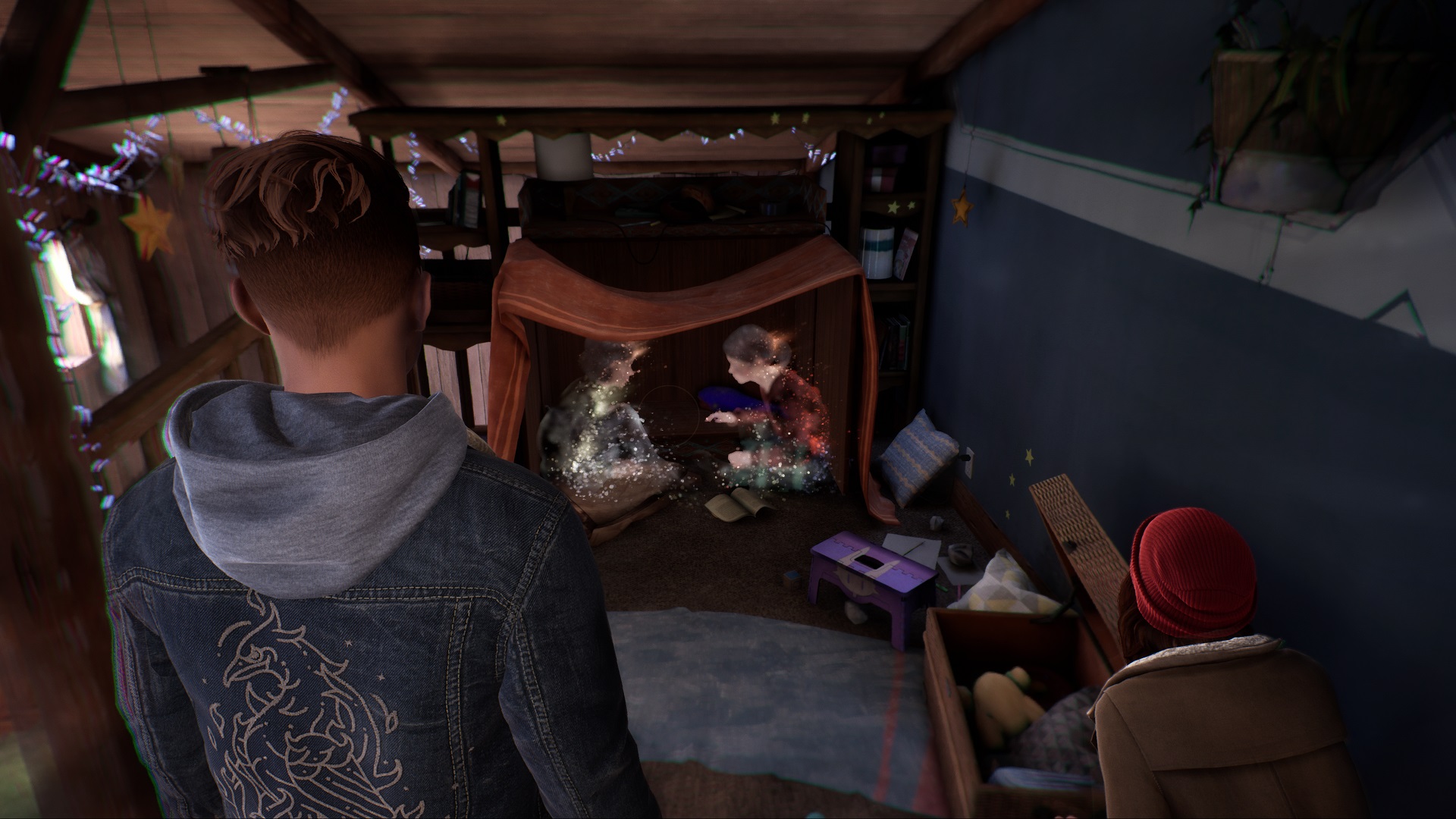
As far as actual gameplay goes, Tell Me Why is your standard Dontnod narrative adventure joint. Most of your time will be spent exploring small areas, discovering small collectibles, investigating the items you can find and making narrative choices. While many of the game’s narrative choices feel impactful in the moment, they don’t have a large bearing on the story as a whole, as you’ll basically follow the same narrative either way. There might be some slight shifts in sentiment between people, but that’s about it, so unless you’re actively interested in maintaining the relationships between characters the changes quickly stop mattering.
Outside of exploration and the occasional puzzles, Tell Me Why’s gameplay hook is the Twins’ Voice. The Voice allows the Twins to communicate telepathically and replay their memories in the environment in which the original situations occurred. The Twins’ telepathy is severely underutilised, only appearing in a couple of situations and really only providing asides during active conversations with other characters. Their memories, however, play an incredibly integral role in the game. They’re utilised to add flavour to an area, expand the narrative and story, add context to a situation and even begin playing into the narrative directly. Its not quite as cool as Life Is Strange’s rewind mechanic, but it provides an additional bit of engagement to the game.

Visually, Tell Me Why is the best looking Dontnod game so far, with fantastically clean and detailed environments and a great artistic flair. The environments and locations of the game, along with the items they contain, all look absolutely fantastic and there are some truly beautiful vistas and skyboxes at points. There are also some exceptionally creative and colourful artworks scattered throughout the game that are truly eyecatching. Its characters don’t look anywhere near as good though, with faces that frequently venture into the reaches of the uncanny valley and plasticine, while their animations definitely leave something to be desired. Moving around those environments can also be stupendously frustrating at point, as the game often requires camera angles to interact with items even when you’re standing literally next to them. I’ve become used to indie infused soundtracks in Dontnod’s game and Tell Me Why is no different, with some fantastic tracks that I’ll continue listening to day to day.
In the end, Tell Me Why feels like every other narrative adventure Dontnod has worked on, but further refined. The narrative is fantastic, the environments are great, the mechanics are interesting, and the characters are largely engaging. Conversely, these points are offset by often flat voicework, some plain bad character models, finicky controls and choices that don’t really affect the game. If you’re looking for a new narrative adventure, you’ll likely love Tell Me Why, but if it’s not your genre of choice, this won’t be the game to make you love them.
Tell Me Why was reviewed on an Xbox One X, with a review copy provided by the publisher. The game is also available for purchase on PC, as well as PC and Xbox Game Pass. For more information, check out the official website.
- Narrative is interesting and engaging - Dialogue is well written - Environments look fantastic
- Voice work is hit and miss - Some characters feel unrealised - Visual quality is inconsistent in characters

